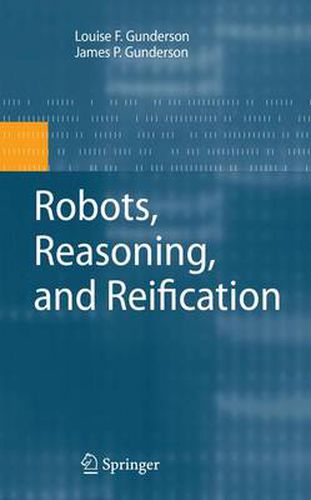Readings Newsletter
Become a Readings Member to make your shopping experience even easier.
Sign in or sign up for free!
You’re not far away from qualifying for FREE standard shipping within Australia
You’ve qualified for FREE standard shipping within Australia
The cart is loading…






This title is printed to order. This book may have been self-published. If so, we cannot guarantee the quality of the content. In the main most books will have gone through the editing process however some may not. We therefore suggest that you be aware of this before ordering this book. If in doubt check either the author or publisher’s details as we are unable to accept any returns unless they are faulty. Please contact us if you have any questions.
This work was created from the statement But, all you have to do is make the robot recognize its surroundings. Salamanders do it, and how complex are they? Little did we know what a long path was started with those simple words. This book is a small step on that path, which we hope leads to robots that can serve as true and useful assistants to humans. At the least, we hope for some help with the tasks that are described by the 3 d**** words (dull, dirty, or dangerous). Fair warning, this work is a synthesis of ideas from many disciplines. As such, we have depended on the work of many other researchers and philosophers. The heart of this work, the lens model, comes from the work of Egon Brunswik. Even though he died in the 1950’s, his ideas are still strong enough to resonate into the 2000’s and into our robot. Another researcher who’s work has greatly in?uenced this work is Walter Freeman, Professor Emeritus of Neurobiology at the University of California, Berkeley. We have relied heavily on his work on preafference and attention to guide the development of our robot. In addition, we have used research from a myriad of different ?elds. Our huge thanks to all the researchers who’s work we used to synthesize this new theory. Denver, CO Louise F. Gunderson July 2008 James P.
$9.00 standard shipping within Australia
FREE standard shipping within Australia for orders over $100.00
Express & International shipping calculated at checkout
This title is printed to order. This book may have been self-published. If so, we cannot guarantee the quality of the content. In the main most books will have gone through the editing process however some may not. We therefore suggest that you be aware of this before ordering this book. If in doubt check either the author or publisher’s details as we are unable to accept any returns unless they are faulty. Please contact us if you have any questions.
This work was created from the statement But, all you have to do is make the robot recognize its surroundings. Salamanders do it, and how complex are they? Little did we know what a long path was started with those simple words. This book is a small step on that path, which we hope leads to robots that can serve as true and useful assistants to humans. At the least, we hope for some help with the tasks that are described by the 3 d**** words (dull, dirty, or dangerous). Fair warning, this work is a synthesis of ideas from many disciplines. As such, we have depended on the work of many other researchers and philosophers. The heart of this work, the lens model, comes from the work of Egon Brunswik. Even though he died in the 1950’s, his ideas are still strong enough to resonate into the 2000’s and into our robot. Another researcher who’s work has greatly in?uenced this work is Walter Freeman, Professor Emeritus of Neurobiology at the University of California, Berkeley. We have relied heavily on his work on preafference and attention to guide the development of our robot. In addition, we have used research from a myriad of different ?elds. Our huge thanks to all the researchers who’s work we used to synthesize this new theory. Denver, CO Louise F. Gunderson July 2008 James P.